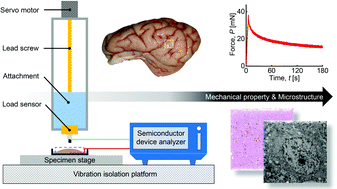The effects of electric fields on the mechanical properties and microstructure of ex vivo porcine brain tissues
Abstract
As a popular tool for regulating the physiological conditions of the brain and treating brain diseases, electrotherapy has become increasingly mature in clinical applications. However, the mechanical properties and microstructure of the brain that change with weak electric fields are often overlooked. Thus, the mechanical behaviors of the brain tissue, which play a critical role in modulating the brain form and brain function, need to be taken into account. Herein, the direct current electric fields were combined with a customized indentation device and simultaneously focused on the changes in the mechanical properties and microstructure of ex vivo porcine brain tissues under electric fields. The experimental results showed that the electric fields reduced the shear modulus and viscosity and increased the relaxation rate of ex vivo porcine brain tissues. Moreover, electric fields polarized the cell bodies and reduced proteoglycan content in the cortex. The TEM observation confirmed that the electric fields deepened the degree of endoplasmic reticulum expansion and decreased the structural integrity of the cell membrane and myelin sheath. This study confirmed the effect of electric fields on ex vivo brain tissues; concurrently, it created comparable space in microscopic structure/compositions and mechanical parameters for future deeper brain experiments under stress-electric field coupling.



 Please wait while we load your content...
Please wait while we load your content...